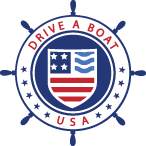How to Drive a Boat: A Beginner’s Guide
If you’re getting ready to drive a boat for the first time, there are some things you need to know! First of all, you’ll want to check the boater education requirements in your state, because you may need to take a course in order to legally operate a boat.
Once you’ve made sure that you’re in compliance with state law, the next step is learning how to drive a boat. Here’s a step-by-step guide to get you started!
How to drive a boat
There are many different types of boats, each with their own particularities. This guide focuses on how to operate a motorboat with an inboard engine. Tips for other types of boats can be found below!
Run the blower
If your boat has a dedicated engine compartment, it needs to be vented to eliminate any residual gasoline vapor before the engine is turned on. Run the blower for a few minutes while you go through your pre-departure checklist (see below).
Start the engine
Some boats have ignitions that are turned on with a key, others with the push of a button. Push-button ignitions may come with an RFID fob which must be in range in order for the engine to turn on.
The kill switch
The kill switch is a safety feature that automatically shuts off the engine if the operator leaves the helm. It’s generally a knob that must be pulled out and held in place by a clip on a lanyard that attaches to the operator’s clothing or life jacket.
Make sure to attach the clip before turning on the ignition. If the kill switch is in the closed position, the engine won’t start!
The throttle
The throttle must be in neutral for the engine to start.
Detach the mooring lines
When a boat is docked, it is usually secured with mooring lines. You’ll need to unmoor the boat before getting underway!
Use the throttle to get moving
The next step is to put the throttle in gear. Start with idle speed, which is the slowest and creates very little wake. This will enable you to get away from the dock, marina or harbor safely and without disrupting other boaters.
How to trim a boat
Adjusting the trim of a boat means raising or lowering the bow. Trimming a boat properly will improve performance and fuel economy, reduce drag and make the ride more comfortable for passengers.
Trim is usually controlled with a toggle on the dash. Toggling up will bring the bow up, and toggling down will bring the bow down. Lowering the bow is used to get the boat on plane as it accelerates. Once you are planing successfully, trim up to raise the bow and skim across the water.
How to steer a boat
If your boat is equipped with a wheel, steering it will be similar to driving a car in many ways—just turn the wheel in the direction you want to go! However, it’s important to note that there are many factors that affect a boat’s ability to turn, including the wind, currents, waves and more.
The vessel’s speed also has a major impact on how it turns. It’s much easier to make tight turns at slower speeds—trying to do so at high speed can even lead to capsizing in some cases! Remember to reduce your speed before making any major course correction.
How to slow down
To slow down, you’ll need to pull back on the throttle. Slowing sharply is a bit more complicated, because boats don’t have brakes. Once you pull the throttle back, you can shift to neutral, pause, then shift into reverse to exert some opposing force that will help you slow more efficiently.
Remember that boats generally aren’t equipped with seatbelts, so any abrupt maneuvers you perform may dislodge your passengers from their seats, injure them or even send them overboard. When abrupt maneuvers are unavoidable, call out a warning to your passengers to hold on.
How to stop a boat
If you’re moving forward and cut the engine, the boat will continue on its course and slow down gradually. It’s important to get a feel for your craft and determine how much distance you need to come to a full stop at various speeds.
If you need to stop more abruptly, pull back on the throttle, shift to neutral, pause and then shift into reverse, as mentioned above. The trick is to use just enough reverse throttle to bring the boat to a stop gently.
Always pause in neutral before shifting between forward and reverse to avoid damaging your boat!
How to reverse a boat
Make sure your wheel is straight and shift to neutral, then into reverse. Turn and look in the direction you’re going—you can also have passengers act as spotters for extra help with situational awareness. It’s best to remain at a slow speed when reversing, particularly when docking.
Pre-departure checklist
- Make sure there are life jackets in good condition in the correct sizes for everyone on board
- Check the weather forecast to make sure conditions are acceptable for boating
- Tell someone where you’re going and when you plan to return
- Make sure you have all of the required boating safety equipment on board
- Make sure you have a marine chart with you so you know where you are and what hazards are in the vicinity
- Make sure you have enough fuel for your excursion—as a general rule, account for 1/3 to get to your destination, 1/3 to come back, and 1/3 to keep in reserve
- Check the condition of your boat:
- Check for hull cracks
- Check the oil
- Check the battery charge
- Check all systems to make sure they’re working
- Make sure the load is evenly distributed on the boat
- Make sure your communication equipment is in working order
How to drive different types of boats
For most motorized vessels, the steps for driving a boat will be similar to those listed above, with a few variations.
Boats with outboard motors
Unlike inboard engines, outboard motors are mounted to the exterior of a boat. They are generally steered using a tiller. Since there is no engine compartment, venting is not required. Instead, prime the motor to get the fuel flowing, pull the starter cord and adjust the choke if necessary.
Once the motor is running, you can twist the handle of the tiller to speed up or slow down, and push and pull the tiller to steer.
Pontoon boats
While the shallow draft of a pontoon boat allows for more deck space, it makes the vessel slower and less maneuverable than other types of boats. The reduced maneuverability is important to keep in mind when driving a pontoon boat.
Powerboats
Conversely, powerboats can get up to very high speeds, which can make turning hazardous. It’s important to take care with the throttle and trim when turning a powerboat in order to avoid capsizing.
General tips for driving a boat
- Always maintain your situational awareness and keep alert for potential hazards
- When in doubt, slow down—reducing speed provides additional time to respond in a dangerous situation
- Always take the weather and other external factors into account (wind, waves, current, etc.)
- Try to approach large waves at a 45-degree angle to minimize the impact
- Try to avoid sudden maneuvers when on plane
- Shift to neutral to make directional changes in tight spaces for more precision
- Never boat under the influence
Learn everything you need to know about boating from Drive a Boat USA!
There are a lot of things to keep track of when driving a boat. That’s why most states mandate a US boat safety course to keep recreational vessel operators and their passengers safe on the water.
Drive a Boat USA offers a NASBLA-approved boater education course that can be done entirely online. Just study the materials to learn everything you need to know about operating a boat safely, and then take the exam to obtain your certificate when you feel ready! Register today.

